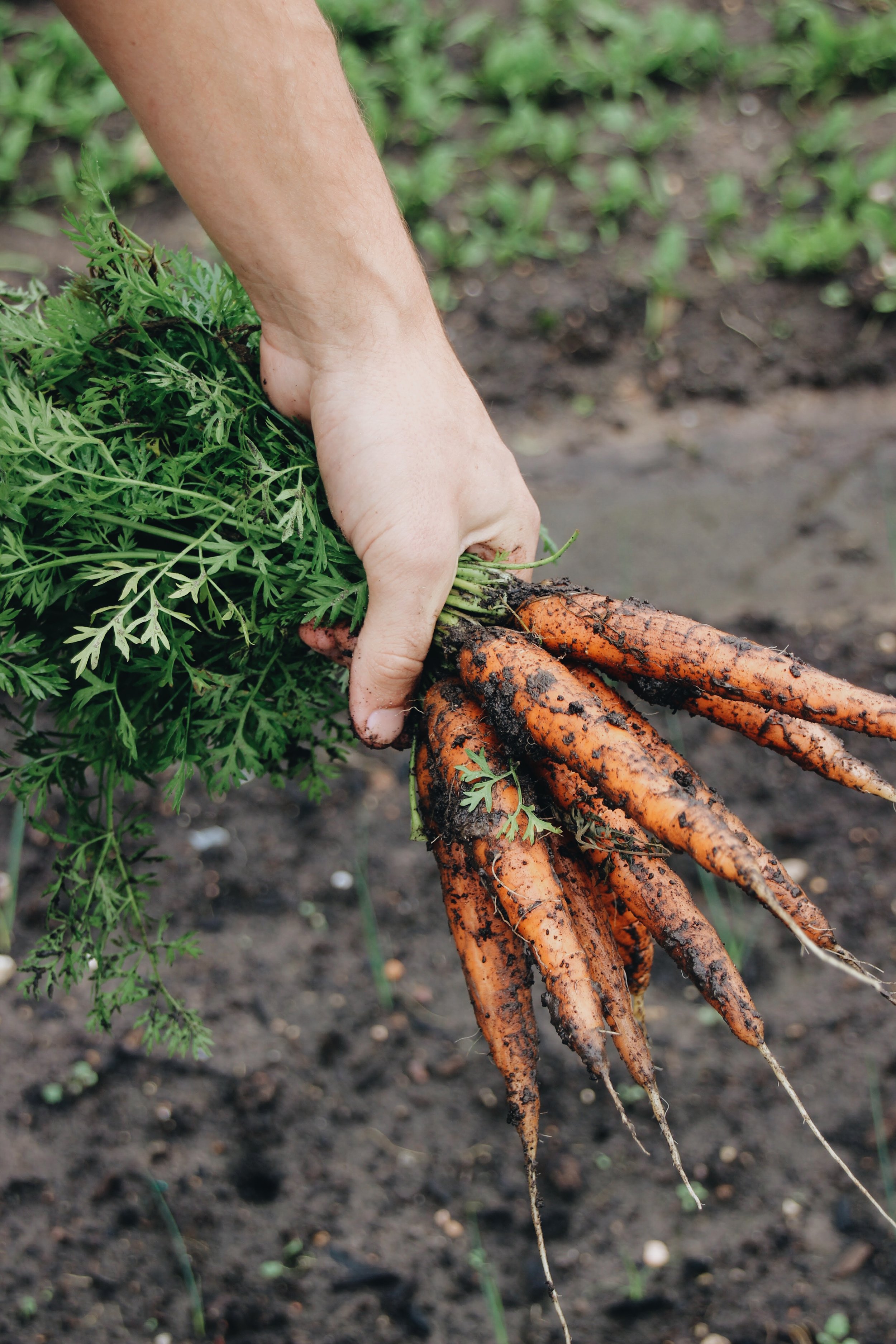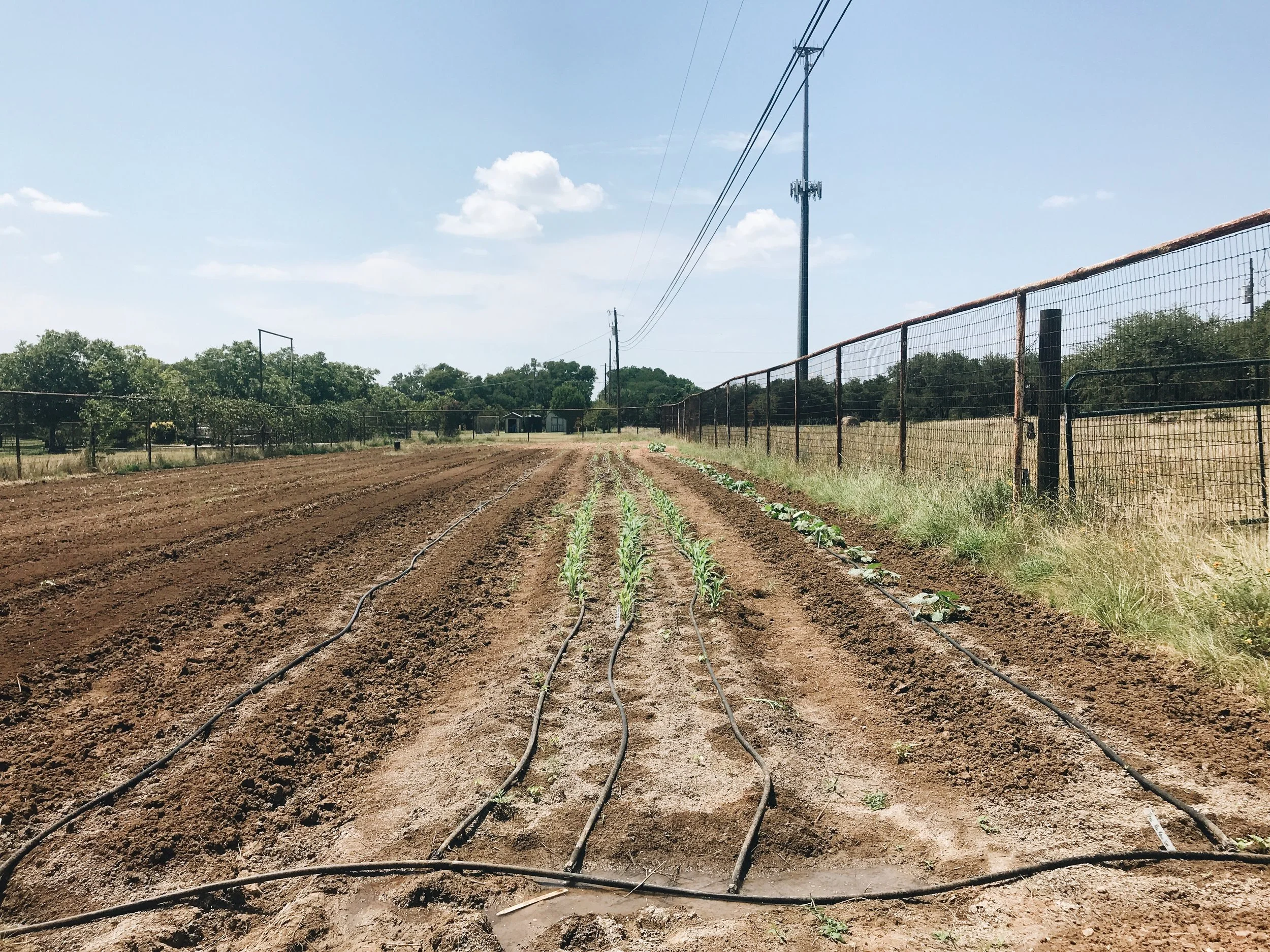Preparing for your fall garden
I'll be honest with y'all. I'm afraid to admit it, but I think I have a bit of a black thumb. And maybe its not that I have a black thumb but just that I am really, really forgetful when it comes to watering my little plant babies. BUT I AM TRYING TO GET BETTER OK. As I type this I am actually remembering that I am supposed to water our hanging baskets today, so hold on I'm gonna go do that real quick.
Like I was saying, I do not have extensive gardening experience, butttt luckily I married a man who is arguably the best gardener I know. I mean, he lives and breathes plants and if you think I am exaggerating then ask the huge wire rack he just put in our living room to start his seeds under lights. Or ask literally anyone who has had a conversation with him. He is the real deal.
I, however, am a beginner like a lot of y'all have said you are too!! I am so excited to learn through trial and error how to grow plants and not let them die of thirst. So when I write these blogs to y'all, know that this is not my information because you probably don't want that at this point in my gardening journey. But this is coming from the man himself who I trust with anything and everything plants, truly.
Just wanted to keep it real with y'all in case I unintentionally led you to believe that I am a gardening guru as well.
Nevertheless, here are some things you can plant in the next several weeks and months to have a beautiful harvest this fall/early winter:
*this is where Grant takes over:-)
The beginning of August is a great time to plant a second round of things that you would normally think of as spring planted, including eggplant, peppers, tomatoes, cucumbers, summer squash, and beans. It is already too late to start seeds of eggplant, peppers, and tomatoes yourself, so find some sturdy transplants at your local garden center and plant them in pots, a raised bed, or whatever garden space that you have available. These plants like plenty of nutrition so be sure to drop a balanced fertilizer in the planting hole.
If you are located in north Texas, specifically DFW and Tyler, choose varieties that mature in less than 75 days to beat the first frost. Sun Gold tomato is a sugary sweet cherry tomato that is very prolific in our Texas gardens; look for this one if you can find it!
Beans, summer squash, and cucumbers are readily started from seed and most varieties do well for us in Texas. Local hardware stores usually carry some seeds but check online at Territorial Seed Company or Johnny’s Selected Seeds for the best selection. These plants will all mature in less than 60 days so you still have several more weeks to get started; our friends in Houston and more southern areas of the state can continue planting some of these things into September.
By the end of the August, begin looking for your fall Brassica transplants. The brassica family includes crops such as broccoli, cauliflower, collards, brussels sprouts, kale (if you’re that kind of person), and many more. These can start going into the ground at this time, but you have at least through the end of September to plant. Again, that date extends further into the year for south Texas folks.
Expect your leafy brassicas such as kale and collards to be ready first, followed by broccoli, cauliflower, and finally brussels sprouts, which may not mature in our climate until the next February or March. Brassicas are heavy feeders as well, so be sure to incorporate a good fertilizer into your soil prior to or at planting.
Try to find some seed garlic at this time and stick the cloves in the fridge for approximately 8-10 weeks so you can plant in October and November. Garlic likes more cold than we often get in Texas to produce big heads so this cold treatment tricks it into thinking that its experienced a cold winter.
As the heat begins to subside in September, it’s time to start planting salad greens, root crops, garden peas and herbs. Beets, peas, carrots, lettuce, spinach, swiss chard, radishes, turnips, arugula, cilantro, parsley, and many other crops of this type are started easily from seed.
As a general rule of thumb, sow seeds at a depth of about twice the diameter of the seed itself; this means about ¼ inch for most of the seeds I just listed and approximately ½ to one inch for larger seeds such as beans, peas, squash, and cucumbers.
Anyone can grow enough salad greens in some pots or a small raised bed to enjoy a salad from their backyard at least once a week; many of these greens will regrow if you carefully harvest the leaves and most can tolerate a shady backyard. If you’re feeling iffy about your seed starting ability, local nurseries stock excellent lettuce, chard, and herb transplants.
Provide some protection from hot afternoon sun for these tender salad greens, as our Septembers can often remain very warm. Houston people may want to wait until the weather cools further in October to begin sowing salad greens.
For best results with some of the root crops, especially carrots, grow in a raised bed or any location with deeply loosened soil so that their roots will grow long and straight. If fruit is more your thing, try to find strawberry plants at your local nursery in September and October; if you can protect them from the worst of freezing temperatures, you may be rewarded with a nice harvest the following spring.
I would be remiss as a flower grower and spouse of a florist to not mention that fall is an excellent time to plant many flowers for blooming the next spring. October is a great month to plant seeds for Texas bluebonnets, sweet peas, poppies, larkspur, nigella, and much more. Set out transplants of snapdragon, dianthus, yarrow, and delphinium if you can find them locally.
All of these species will grow slowly throughout the winter and commence rapid growth early in the spring once day length and temperature begins to increase. Come March, April, and May you will be rewarded with a beautiful display of color in your garden beds.
You should also start looking for and ordering bulbs for tulips and daffodils today, in July, so that you can get the varieties you want and prepare them properly for planting in November and December.
For daffodils, look for varieties being advertised for the south and specifically ones that will naturalize and return every year. Tulips, normally thought of as the purview of northern gardeners, can be grown here successfully if you order from a reputable supplier and place the bulbs in your crisper draw, away from fruits or anything old and rotting, for approximately 10 weeks.
This is to fulfill the vernalization, or chilling, requirement that all tulips need in order to produce nice long stems and big flowers. Look for varieties described as ‘single late’ varieties, which provide the biggest flowers and most resilient display in our difficult gardening climate; ‘Menton’ and ‘Dordogne’ are show stoppers and we were lucky to have some for our wedding.
I expect at this point that I may have lost some of you in all of these details but I hope this has inspired you to start planting, even if that only means one pot on your back porch. I have attached vegetable planting guides for some major areas of Texas for reference; these should provide a better visual for much of what I just talked about.
Shoot us an email at thefarmerandi@gmail.com if you have any questions. Happy planting!








![Hello Summer [food]](https://images.squarespace-cdn.com/content/v1/5773381e414fb51a8f63dc1c/1496348982545-5FI9HYVL9AAE6MESYDAR/summer+produce+guide.png)






